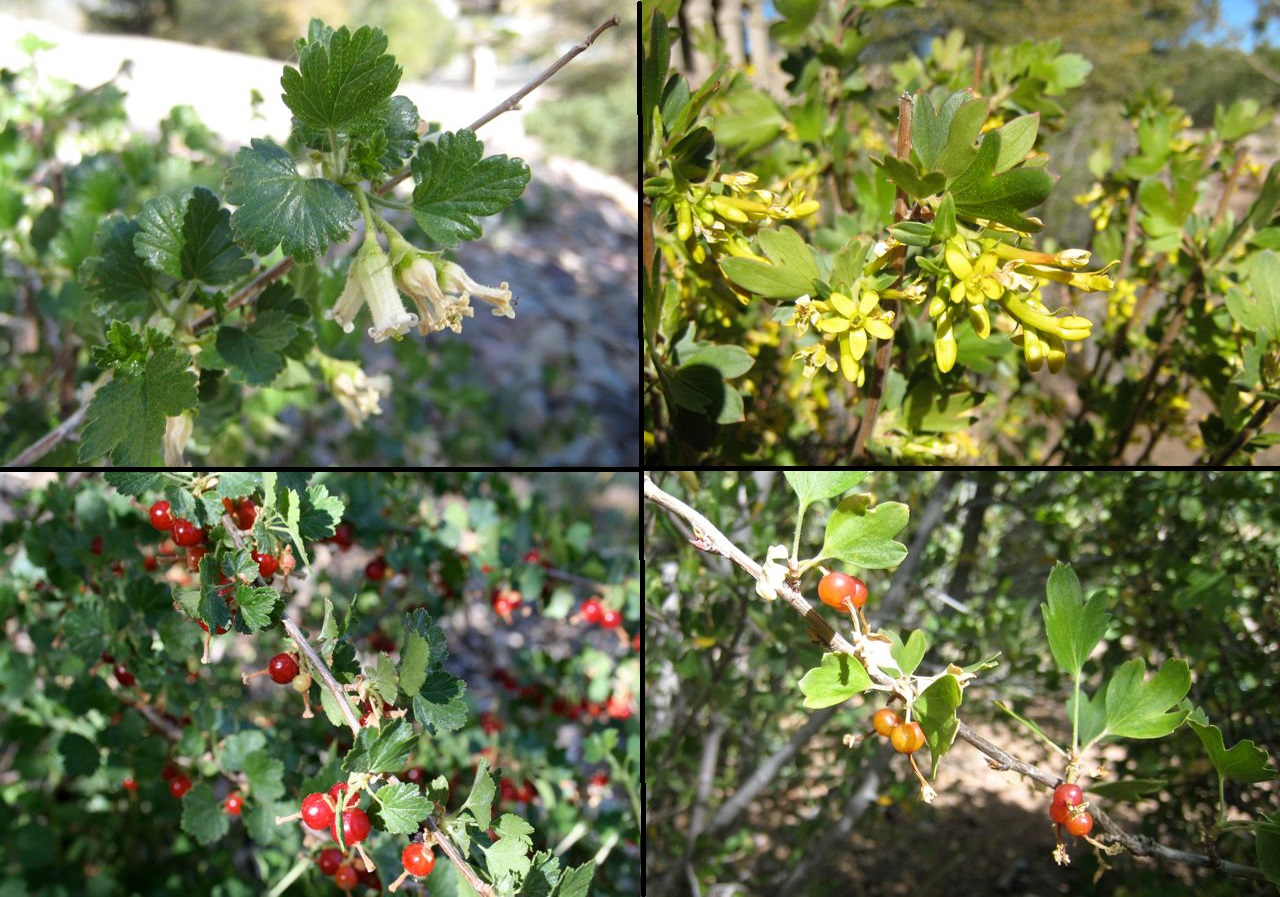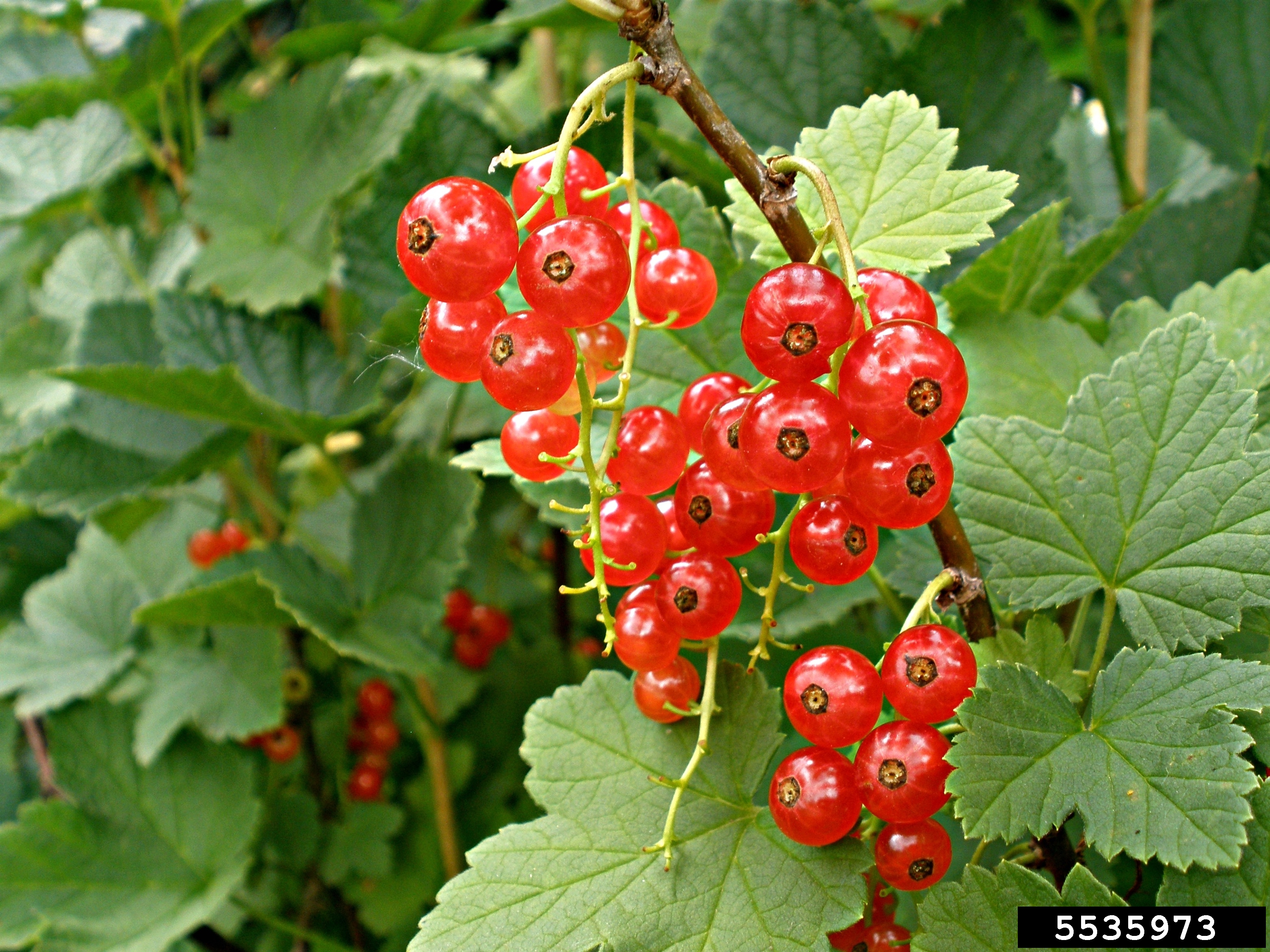 Gooseberries and Currants - October 2, 2019 Jeff Schalau, Agent, Agriculture & Natural Resources University of Arizona Cooperative Extension, Yavapai County Gooseberries and currants are shrubby plants that bear edible fruit and belong to the genus Ribes. Eleven species are native to Arizona. In general, gooseberry plants are spiny while currant plants tend not to be armed with spines. In the wild, these species are found in forests, woodlands, canyons, and riparian areas at elevations ranging from 4,000 to 11,500 feet. The fruits and leaves are used for food and medicinal purposes by Native Americans (and ethnobotanists and wild crafters) and plants are browsed by wildlife and domestic livestock. Birds and wildlife also eat the berries. The flowers contain nectar which makes them attractive to both hummingbirds and butterflies. Gooseberries and currants are deciduous and have small, lobed leaves that usually turn red in the fall. Through the ages, gooseberries and currants have been selected and bred to produce larger, tastier fruits. There are several cultivated varieties which are available and of interest to backyard gardeners. We have two common native currant species in Yavapai County. Golden currant (Ribes aureum) is the most common native species available in nurseries. It has fragrant tubular yellow flowers and is a very attractive landscape plant that grows up to 8 feet tall. Ripe fruits are black or red. This is the best adapted species for lower elevations areas like Sedona and cooler areas on the Verde Valley. Once established, it is somewhat drought tolerant. Wax currant (Ribes cereum) has white to pink tubular flowers. The fruits are red to dark red. The leaves are not as smooth as those of golden currant and darker green. This species is usually found in pine forests and not as widely available in local nurseries. Both produce small edible berries. As mentioned previously, birds are fond of currents. If currents occur near your property and you have favorable habitat for foraging birds, it probably won’t be long before a few currant plants become established under perching spots or near fences. Birds “plant” many seeds on my property. In addition to currants, I often find seedlings of Texas mulberry and Oregon grape under favorite perching locations. These, along with gooseberries and currants, can be transplanted to another location or left to grow if they don’t interfere with other landscape features. Gooseberries and currants have a dubious past because they are the alternate host species of white pine blister rust: a fungal disease that affects five-needle pines such as western white pine and sugar pine. Many rust diseases rely on two host plant species to complete their life cycle (another example is cedar apple rust). White pine blister rust was accidentally introduced to North America in about 1910. Since its introduction, it has spread from Vancouver Island across much of the west. Efforts to control it have ranged from hand-controlling Ribes to breeding rust resistant varieties of desirable pine species. White pine blister rust has spread across the country to the east coast. Maine, the Pine Tree State, is named such because of its stands of eastern white pine. Maine, New York and a few other eastern states have restrictions on the sales and planting of gooseberry and currant plants. White pine blister rust is still on the move in the southwest where it affects southwestern white pine (Pinus strobiformis). An isolated outbreak has been documented in the Sacramento Mountains of New Mexico and appears to be spreading. In Arizona, southwestern white pine is found in the mountains between 6,500 and 10,000 foot elevations and its range overlaps with several species of Ribes. There are no restrictions on the planting of gooseberries or currants in Arizona. Cultivated varieties of gooseberry and currant plants are available by mail order and are usually planted in spring with other bare root fruit trees and vines. I am fairly certain they would perform well in Yavapai County – especially where soils are not excessively alkaline and they were mulched and neighboring plant competition is minimized. Utah State University Extension has excellent publications on growing gooseberries and currants. These resources, photos and other information are included below. Consider planting either native or cultivated gooseberries and currants in your landscape. They are shade tolerant, tidy plants that require little maintenance. The natives are excellent for wildlife habitat and the cultivated varieties will be of great interest to food gardeners and permaculturists. You can follow the Backyard Gardener on Twitter – use the link on the BYG website. If you have other gardening questions, call or email the Master Gardener help line in the Prescott (928-445-6590/prescottmg@gmail.com) or Camp Verde (928-554-8992/verdevalleymg@gmail.com) and be sure to include your name, address and phone number. Find past Backyard Gardener columns or provide feedback at the Backyard Gardener web site: http://cals.arizona.edu/yavapai/anr/hort/byg/. Photos  Native currants in Yavapai County: wax currant (Ribes cereum) flowers and fruit on left and golden currant (Ribes aureum) flowers and fruit on right (Doug McMillan and Marv Mazur, Yavapai County Master Gardeners, from: Yavapai County Native & Naturalized Plants, https://cals.arizona.edu/yavapaiplants/).
Native currants in Yavapai County: wax currant (Ribes cereum) flowers and fruit on left and golden currant (Ribes aureum) flowers and fruit on right (Doug McMillan and Marv Mazur, Yavapai County Master Gardeners, from: Yavapai County Native & Naturalized Plants, https://cals.arizona.edu/yavapaiplants/). Cultivated currants Ribes rubrum (Ansel Oommen, Bugwood.org).
Cultivated currants Ribes rubrum (Ansel Oommen, Bugwood.org).Additional Resources Golden Currant (Ribes aureum), Yavapai County Native and Naturalized Plants, University of Arizona Cooperative Extension cals.arizona.edu/yavapaiplants/SpeciesDetail.php?genus=Ribes&species=aureum Wax Currant (Ribes cereum), Yavapai County Native and Naturalized Plants, University of Arizona Cooperative Extension cals.arizona.edu/yavapaiplants/SpeciesDetail.php?genus=Ribes&species=cereum Growing Currants, Utah State University Extension extension.usu.edu/yardandgarden/fruits/currant Growing Gooseberry, Utah State University Extension extension.usu.edu/yardandgarden/fruits/gooseberry White Pine Blister Rust, USDA Forest Service www.fs.fed.us/rm/highelevationwhitepines/Threats/blister-rust-threat.htm |